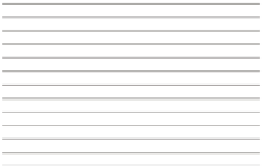Information Technology Reference
In-Depth Information
66000
65000
64000
63000
62000
61000
60000
59000
58000
57000
56000
55000
54000
53000
0 1 2 3 4 5 6 7 8 9 10 20 30 40 50
Optimisation
Fig. 3.
Experimental Results
implementation has been integrated with
ContMAS
as an “advisor”: when machines
bid for container moves in
ContMAS
, they may consult the prepared schedule, and use
this to guide whether they submit bids or not.
We now briefly present some (initial) experimental results. These were derived using
real (anonymised) data from January 2009, extracted from the JMT system used by the
local port, with only data fitting our simplified scenario being used (unloading only,
using only one area in the yard, and with no yard-to-yard moves considered). We used
data for a single ship being unloaded, which involved 82 containers, 3 Quay Cranes, and
8 straddle carriers. Figure 3 shows the solution quality (i.e. its cost: smaller is better) as
the optimisation step is repeatedly applied. As can be seen, the initial solution resulting
from the initial allocation phase (at x=0) is improved by the first few optimisation steps.
Each point in Figure 3 is the average of ten runs.
6
Optimisation of Container Yard Allocation
The placement of containers in the yard can make a big difference to the cost of moving
the container later to where it is needed. However, yard allocation is complicated in
practice by various uncertainties. For instance, ships sometimes do not arrive at all and
all of the containers scheduled for a particular voyage must then be rebooked on other
vessels or returned (if that is possible.) More significantly for yard operations, those
remaining containers may now be obstructing access to containers for later voyages.
Additionally, tide or weather conditions may result in a ship being berthed with a re-
versed orientation — with the bow being where the stern was expected. As the loading
sequence depends on the orientation this can create a significant problem of overstows.
For these reasons most prior research (see Section 3) has addressed various sub-areas
within the overall problem of optimising container locations within the yard. This prior
research indicates that simplified variants of the Yard Allocation Problem are amenable
to optimisation, however no single approach to date has addressed the complete prob-
lem. Note that this is a multi-objective problem with many, often conflicting, constraints
to be satisfied. To try to tackle this task we have implemented an optimisation interface
within
ContMAS
that allows a variety of approaches to be tried.
Agents that need a yard location in which to store an incoming container make a
request of a
BayMapOptimiser
agent, which calls one of potentially several optimisers.













